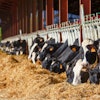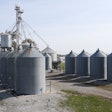
It is widely recognized that raw material nutrient content varies between seasons, growing regions and even individual batches from the same source. However, the true extent of this variability and its potential economic impact remain much less well understood.
Data collated from around the world during the first five months of 2016 have shown that the apparent metabolizable energy (AME) content in corn can vary by more than 400 kcal/kg. Given the inclusion rate typical in corn-based broiler diets, this equates to a potential variation in the finished feed of 270 kcal/kg.
At current prices, such variability could potentially add as much as EUR24.40 (US$27.24) per ton of feed. In a 2.6 kg bird, this represents 9 percent of the total feed cost, or EUR0.11 (US$0.12) bird. Even if the actual variation experienced is just 25 percent of this maximum, the cost implication for a company producing 7.5 million birds each month is a substantial EUR200,000 (US$223,000) per month.
Global nutrient variability
The graphic "Global variation in corn poultry AME" shows average poultry AME values for commercial corn samples sourced from feed mills in different geographical regions between January and May 2016, with averages ranging from as low as 3,150 kcal/kg up to 3,375 kcal/kg, a spread of 225 kcal/kg. However, although this data is useful, such averages tell us little about the variation in corn quality seen within each region or country, which has potentially greater impact.
The data in the graphic below is broken down by country, using a box and whisker plot to show the full extent of the AME variation within the samples analyzed (narrow gray bar) and the interquartile range (wide gray box) which shows the distribution of 50 percent of the data about the median (white line). It highlights the extent of variation experienced in some countries and the differences between countries.

Box and whisker plot showing the large variation in corn poultry AME content globally. The narrow gray bar shows the full extent of variability, the wide gray box the range for the 50 percent of samples closest to the median, and the white line indicates the median. | AB Vista
Potential for cost savings
The potential for economic wins comes when the total AME variability is large, such as in Mexico, the United States and Indonesia, where the range was found to be around 200 to 300 kcal/kg. Yet it is also important to recognize that even the 50 to 100 kcal/kg differences measured in countries such as France, Thailand and Argentina still represent considerable potential wins if effectively accounted for during diet formulation.
The economic impact is also not limited to feed manufacturing. Even if formulation safety margins are sufficient to account for the full range of AME variation experienced, nutrient supply to the bird will remain inconsistent. This has serious implications for the poultry producer aiming to meet bird nutrient requirements as consistently as possible to ensure consistent, predictable growth.
In addition, any potential nutrient undersupply resulting from a failure of safety margins, to cover the full extent of AME variation, can have significant negative effects on bird performance.
Corn variability analysis
Until recently, monitoring corn variability, which is inherent in the nutrient content of all corn, has involved time-consuming and expensive methods of analysis that provided data of limited value. The historical nature of the results meant that past averages and ranges could be used as a guide to adjust formulations, but there was little opportunity to adjust formulations based on actual corn batch analysis.
However, that is now changing thanks to developments in near-infrared (NIR) spectroscopy hardware and software that are enabling near-instant analysis of a range of nutrient contents (including AME, proximates and phytate) and physical characteristics, such as corn particle size.
The net result is that analysis results can, for the first time, be generated rapidly enough to enable formulations to be adjusted in real time to account for corn quality variation, thereby delivering improved accuracy of formulation, greater consistency of nutrient supply, and potentially substantial cost savings by reducing the need to “overspecify” diets.
The reduced cost, quicker turnaround time and ease of use allow much more frequent analysis of corn quality, leading to the creation of larger data sets that are inherently more accurate. With data on the extent of corn variability available sooner, sampling procedures (typically the number of samples being taken) can be continuously adjusted to ensure sufficient data points are obtained for the results to be truly representative.
Latest NIR developments
Coupled with this, emerging technologies — such as centrally maintained online calibrations, pay-as-you-use calibrations, portable NIR and affordable in-line NIR installations — are making NIR technology more accessible across the entire feed industry. The subsequent expansion in the number of NIR-analysed results available for industrywide interpretation brings additional potential benefits, as the main trends in corn variability become clearer and more accurate.
New NIR technologies give the opportunity to generate large data sets of results; however, they also present challenges. Storing, interpreting and understanding such results correctly will require a new type of infrastructure and expertise if subsequent decisions are to be made soundly. As with the graphical examples above, when handling such large sets of results, there is more to be gained by looking at the distribution of the data than at a single average value.
Creating the necessary processes and developing appropriate partnerships will be critical if the potential benefits now available from NIR analysis are to be fully realized. However, there can be little doubt that the opportunity to more fully understand corn variability, set up systems to account for those differences and more efficiently deliver required dietary nutrient supply is something the global feed industry will not want to ignore.

















